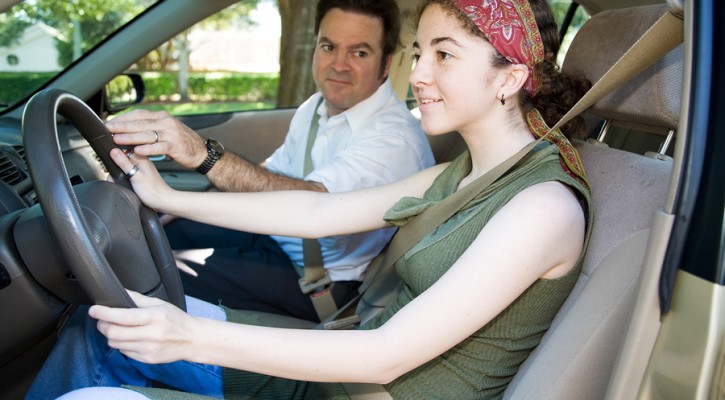
Support for Graduated Driver Licensing Laws
April 30, 2009
According to the National Highway Safety Administration (NHTSA), adolescent drivers, especially 16- to 17-year olds, are disproportionately involved in deadly motor vehicle crashes. Sixteen-year old drivers have crash rates that are about three times greater than 17-year-old drivers, five times greater than 18-year-old drivers, and approximately twice the rate of 85-year-old drivers. According to the NHTSA and the Insurance Institute for Highway Safety (IIHS), specific contributors to these higher crash rates include:
- Lack of driving experience and skills: Compared with crashes of older drivers, those of 16-year-olds more often involve driver error.
- A propensity towards risk taking behavior and poor decision-making.
- Driving at night: Per mile driven, the nighttime fatal crash rate for 16-year-old drivers is twice as high as during daytime hours.
- Distraction from teenage passengers: Fatal crashes involving 16-year-old drivers are more likely to take place when other teens are in the vehicle, and the risk increases with every additional passenger.
- Speeding: Sixteen-year old drivers have a higher rate of crashes in which excessive speed is a contributing factor.
Graduated Driver Licensing (GDL) programs help young drivers get driving experience progressively while minimizing risk, beginning with a restricted permit and eventually leading to full licensure.
Most programs include three stages:
- Learner Stage: Supervised driving, ending with a road test.
- Intermediate Stage: Limiting unsupervised driving in high-risk circumstances.
- Full Privilege Stage: A regular driver’s license.
Provisions of graduated licensing laws may include:
- Required hours of adult supervision during the learner stage.
- Restrictions on late-night driving.
- Restrictions on driving with teen passengers.
- Seat belt requirements for drivers and passengers.
- Restrictions on cellular phone use.
- Prohibiting the driver from moving up to the next level due to traffic violations.
GDL laws in most of the states that have them do not comply with all of the recommendations of the NHTSA; still, there has been an overall decrease in fatal crashes nationally since GDL laws began to be implemented. In 2006, 7,463 drivers who were 15 to 20 years old were involved in fatal crashes – an eight percent decrease from 8,074 involved in 1996. Individually, states with GDL laws also show improvement:
- California: A five percent decrease in crashes for 16- and 17-year-old drivers.
- Florida: A nine percent decrease in crashes for 16- and 17-year old drivers.
- Michigan: A 26% decrease in crashes for 16-year-old drivers.
- North Carolina: A 25% decrease in crashes for 16-year-old drivers.
- Oregon: A 29% decrease in crashes for 16-year-old drivers and a 16% decrease in crashes for 17-year-old drivers.
NHTSA research has also found that the most comprehensive GDL programs are associated with the greatest decrease in crash rates for teen drivers.
It is more difficult to evaluate the individual components of GDL laws because of the overlap of restrictions, but the NHTSA has conducted some research in this area. An analysis of the passenger restriction laws in California, Massachusetts, and Virginia indicated that there were 740, 173, and 454 fewer 16-year-old involved in crashes per year, respectively. A different study found that states with nighttime driving restrictions for teen drivers show decreases in crashes of up to 60% during the restricted hours.
Public support for GDL laws is also strong. In 2007, the NHTSA conducted the Motor Vehicle Occupant Safety Survey (MVOSS), a national telephone survey about driver safety. Seventy-nine percent of the participants said that teen drivers should proceed from a learner’s permit to a provisional license status rather than directly to an unrestricted adult license. The results of the survey also indicated strong support, ranging from 73% to 99%, for specific restrictions on provisional driver license status, such as:
- Requiring young drivers to wear a seat belt at all times.
- Prohibiting driving after 9pm, unless supervised by an adult.
- Limiting the number of teenage passengers allowed in the vehicle.
- Prohibiting the use of a cellular phone while driving.
- Requiring the new driver to hold the provisional license for at least one year without any traffic violations before receiving an unrestricted adult license.
GDL provisions are still in their infancy in many states, so evaluating the results of these programs is difficult. However, outcomes so far are promising. The enactment of and enforcement of these laws are important steps in efforts to save the lives of young drivers.
